Knowing Maharashtra's bid for UNESCO World Heritage Sites
Rock art in India is one of oldest material evidence of the country"s early human creativity. These are generally in the form of rock paintings, rock etchings, cup marks and ring marks found all over India. However, the large concentration of geoglyphs recognized by UNESCO are on the laterite plateaus of the Konkan region, is the most remarkable open-air ensemble of prehistoric human expression of rock art in the Konkan region.
Total Views |
According to the recent development in India's heritage sites being included in the UNESCO World Heritage Site tentative list, cultural heritage sites from the states of Maharashtra, Andhra Pradesh and Meghalaya made it to the tentative list. This has made the total of Indian sites in the UNESCO tentative list to 49, with the three being added to the 46 sites that have made their way to the tentative list ever since 1998, when temples of Bishnupur were the first to be counted in the list. In this article series, let us one by one know more about these heritage sites from the states of Maharashtra, Andhra Pradesh and Meghalaya and understand their, historical, social, cultural and environmental significance not only for the country but also globally.
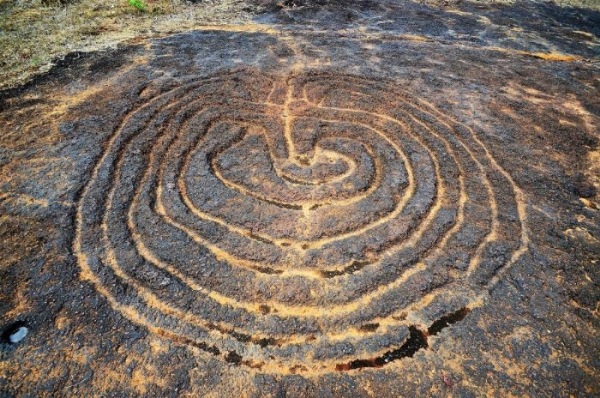
Geoglyphs or Petroglyphs in Maharashtra and Goa
Rock art in India is one of oldest material evidence of the country's early human creativity. These are generally in the form of rock paintings, rock etchings, cup marks and ring marks found all over India. However, the large concentration of geoglyphs on the laterite plateaus of the Konkan region, is the most remarkable open-air ensemble of prehistoric human expression of rock art in the Konkan region. The Konkan region extends from the coastal strip of Maharashtra, through Goa, up to Mangalore in Karnataka. The Geoglyphs of Konkan date from Mesolithic to Early Historic period.
What are Geoglyphs or Petroglyphs?
Geoglyphs are rock art produced on the earth's surface either by positioning rocks, rock fragments or by carving out or removing part of a rock surface to form a design. The latter technique to carve geoglyphs is also known as reduction technique. The rock arts are a critical typology of material heritage being the only evidence pointing to the presence of human settlement in the Konkan region and, from a stylistic analysis, their features point to their continued existence from Mesolithic era till early historic era and possibly, were contemporary to other Deccan Chalcolithic cultures. Further, the animals and creatures carved in the art, are also the key proof of existence of certain types of faunal lifeforms that are no longer present in the region today.
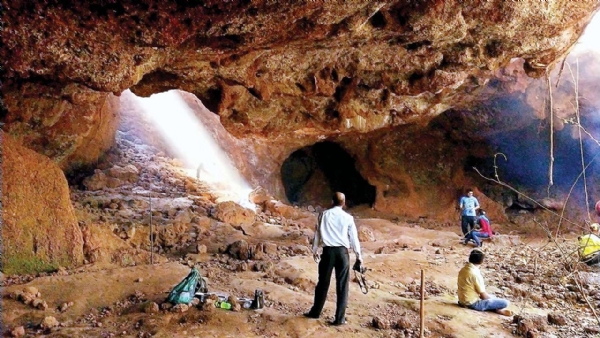
Known as Aparanta, the Konkan region was a culturally vibrant land since the early historical period. The region witnessed flourishing trading activities complex maritime and inland trade linkages. It was connected to the Western Ghats through major communication corridors (called ghats) and the landscape were dotted with numerous forts, to protect the series of ports that were the critical linkage between the subcontinental and foreign shores. These features made Konkan region the most sought after political-geography, contested by the Mauryas, Satvahanas, Shilaharas, Rashtrakutas, Kalchuris, Chalukyas, Vijaynagaras, Deccan Sultanates, Mughals, Marathas, and also by the European colonial powers such as Portuguese, Dutch and later the British alike.
While remains of continued habitation since early historic life is evident in the form of several affluent port towns, trading towns and routes, rock-cut caves, forts, colonies of foreign powers in form of factories, castles and towns, there is little evidence besides these Geoglyphs, to demonstrate prehistoric life of this region, which enabled the indigenous population to leverage from their landscape. These clusters of Geoglyphs covering about 900 km from north to south, along the coastline of the Arabian sea, show the expanse of initiation of culture in Konkan and provide visual representation of prehistoric life here.
Academic significance of the site
Of the Konkan region, the area between today's Thane district in Maharashtra to Goa, has always been the most important cultural zone in the development of the culture in Konkan. Concentrated primarily in the southern parts of this region, these Geoglyphs are the only material cultural remains that point to the prehistoric human activities in the Konkan. The imagery and contents of these geoglyph clusters may also be understood as a documentation of how people adapted to ephemeral wetlands in a dry-arid plateau having shallow rock pools, streams and watercourses support a rich diversity of endemic and threatened aquatic fauna such as fish, amphibians, insects and others. This not only fills some knowledge-gap for the Konkan and the Deccan region, but also adds to an on-going research on human resilience and adaptation to extreme fluctuations in climates.
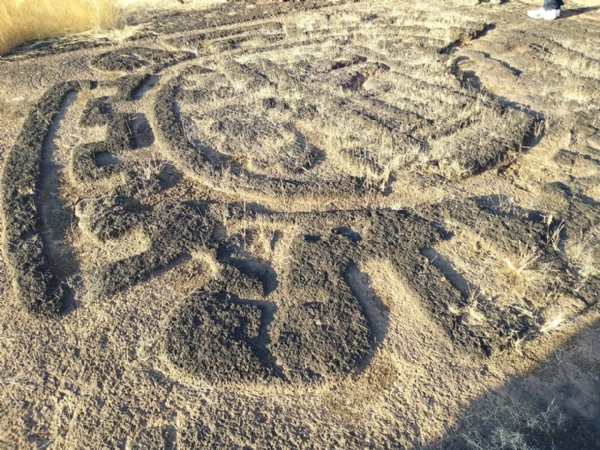
More than 600 figures arranged in the clusters are depicted in Kasheli, Rundhye Tali, Devache Gothane, Barsu, Devi Hasol, Jambharun, Ukshi and Kudopi in South Western Maharashtra and Pansaymol in Goa. The rock art is the most comprehensive, well-preserved and artistically distinct Geoglyphs evidencing a cultural legacy of 12,000 years. The content, composition, scale, quality of imagery and artistic techniques not only provide an insight on the range of mainly faunal life, but also depict the increasing tendencies of depicting abstract and anthropogenic forms onto stone. Further, the Geoglyphs show increasing finesse of artistic skill and evolution of techniques of etching and scooping, that are fundamental to mastering rock art.
The high level of artistic skills and evolution of techniques of rock etching and scooping, are significant markers of their intellectual endowment of the cultural group. The diversity of symbolism, forms, composition, proportion, techniques evident in each site are distinct and collectively represent an insight into the world view of earliest transitionary phases of the culture in Konkan.
Global significance of the site
The discovery of these geoglyphs as individual properties and as a collective whole, dispersed along 900 km of the Konkan coast, fill an essential knowledge gap that had puzzled antiquarians for long. These add a new chapter in prehistoric rock art and shed light on the transitory phase from Stone Age to Early Historical period of the Konkan region.
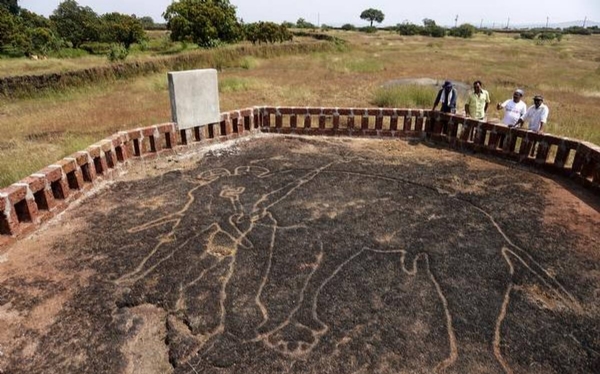
In South Asian cultural context, Mesolithic communities are known for their technological development in form of using microliths and creation of art mostly in painted form and limited engraving. The ensemble of Geoglyphs of Konkan is unique as rock engravings are successfully attempted in life size of even larger than life indicating not only abstract thinking but successful and intended developments in artistic and technological skills of rock artistry.
This is further reinforced by the choice of site evidenced by the distribution of these geoglyphic, where artists selected hard stone in density for engraving and comparatively softer surface to execute the finer desired forms. This undoubtedly proves the knowledge of the landscape and material properties, outstanding technological skill and mastery over applying carving tools that were fundamental for survival and stone artistic expressions.
The Geoglyphs in the coastal area of Konkan are outstanding and most well-preserved and only surviving evidence that comprehensively depict the transitionary phases of Mesolithic culture from pre-pastoral hunter-gatherers to settlers of historical era. Each cluster of symbols contributes to characterization of this rock engraving culture and the repetition of symbols in distinct stylistic form indicates human creativity and evolution of rock artistic tradition in the Konkan region.
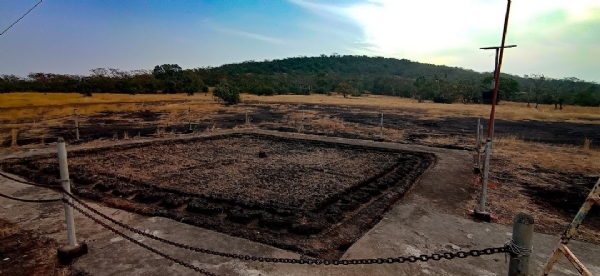
The depiction of now extinct fauna, abstract geometric forms and anthropomorphic forms are the only physical evidence of a cultural phase that was foundational for transforming the Konkan region into an important political geography and a prominent trading hub that integrated foreign shores with hinterlands, making it one of the most sought-after coastlines of the sub-continent across history.
-- The article is based on information provided by UNESCO


